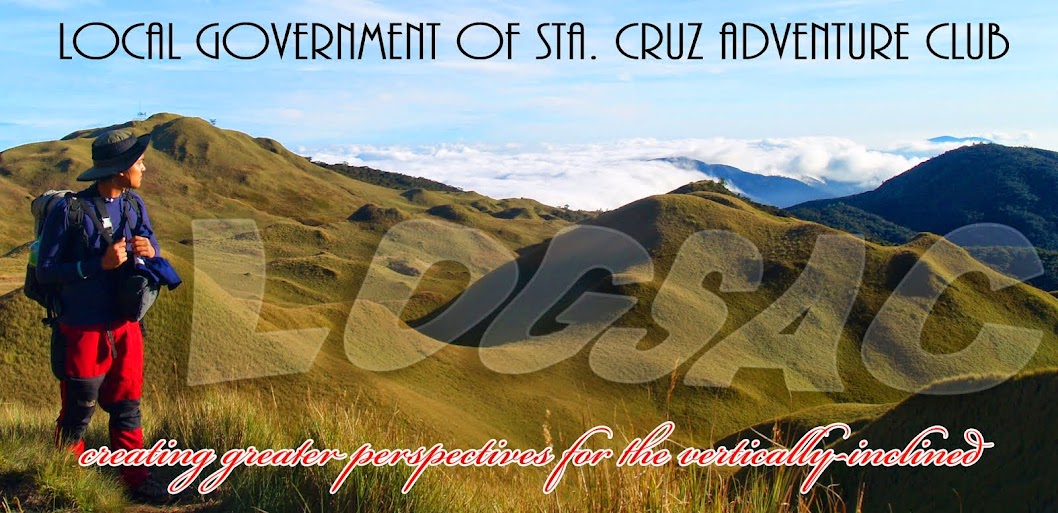My
happiness had bloat to indefinite proportion when I heard of the TreeVolution.
As a major event aimed at environmental conservation and rehabilitation that
also seeks to address the National Greening Program (NGP) of the government,
there were tremendous reasons to be happy and excited about it. Days after its
formal declaration to the public, I was one of those who eagerly took the
opportunity to register online. With my group that has been in dire need of
such activity, I had several commitments from my group members.
Our area of
assignment was at a far-flung barangay of Magsaysay in Marilog District, a huge
mountainous area in Davao City. We were joined in by other volunteers, mostly
coming from the academe sector in Davao and some other cause-oriented groups.
Personally, I had several thoughts of the event, to which my co-LOGSACs obliged and shared the idea that somehow TreeVolution had built good points and some points of improvement. Let me share it to you:
The Noble Purpose. On paper, TreeVolution
is a very good concept. The wide open lands in Mindanao commands immediate
treatment and the necessity of increasing the green canopy of the country is
very evident. The continuous degradation of our forest cover is alarming and that
if we do not act on it is a disaster. To
some extent, TreeVolution could have been better if the implementation was
channeled through the local level. In Marilog for instance, I observed that the
number of volunteers was really very impractical in a single venue, and the
trekking distance was time-consuming for the volunteers especially to the
student who were not used to walking 7-9 kilometers amidst the scorching heat
of the sun. Maybe next time we will encourage participation of local mayors to
initiate similar event in their respective areas with DENR personnel to act as
marshals, documenters, time-keepers and stewards.
The Guiness World Record Attempt. There was nothing wrong about attempting to beat the record held by India for most trees planted in just 60 minutes. This was even commendable considering that it cultivated not only the planting site but the social dynamics of being Filipinos. In an instant, the spirit of oneness and coherence was renewed as shown by the huge number of volunteers who flocked in to the different identified planting sites. However, there was more than to the contest than the Guiness citation. Basically it was initiated to rehabilitate the ailing environment. It could have been better if we reserved that Guiness attempt in the coming years and not now because honestly, we did not have the luxury of time. The Guiness attempt obviously made the event overrated. Nonetheless, there were early reports that we made it and if it was true, my warmest CONGRATULATIONS to all of us.
Initiative for Survival. As per reports, TreeVolution allowed us Mindanaons to plant 2.1 million trees in one hour, 200k plus trees more than that of India. This is admirable, truly. Being late in the planting area by almost 30 minutes, I struggled to beat the individual minimum requirement of 20 trees. Ten minutes before the time limit, I planted my 20th seedling. My co-LOGSACs also did the same. I spent the rest of my ten minutes by taking pictures of volunteers, especially my club-mates.
Thinking about the bulk of trees planted, I could not help but wonder how the planted trees could fare in as far as the rate of survival is concerned. It could be worthy and healthier if we attempted to set a Guiness record for higher rate of survival in a tree planting effort rather than by having the most number of trees planted. This remains to be a challenge for the organizers and volunteers to take. If we are really serious in making Mindanao as a hub of green woodlands, we should strive to make those planted seedlings grow and survive. In the case of LOGSAC, we will try to make a semi-annual visitation of our area and will build a relationship with the land owner so that we can device a comprehensive maintenance mechanism onward to making those trees vertically dominant in the future.
The LOGSAC Spirit. On the lighter side of things, I considered TreeVolution as a strategy to reunite the club that was instituted eight years ago. With our passion to outdoor and nature, members will always be ready to spare time to participate to activities relative to environmental conservation. Although other members did not make it due to prior commitments with their work and family, but still the presence of 15 members already manifested strong support to the event.
Thank you so much to those who joined the event namely: Jonas Florencondia, Junjun Libre, Faridah Lumpapac, Doreen Joy Bauya, Julius Biala, Henry Gapula, Michael Gapula, Noel Bartolome, Jerry Pastor, Victor Nelson Macias, Niloy Cubillas, Romulo Birondo, Joseph Salise and Jessie Salise.
Special thanks is also due to Mam Doris Tungal of MDRRMO and Mayor Joel Ray Lopez for providing the vehicle.

























